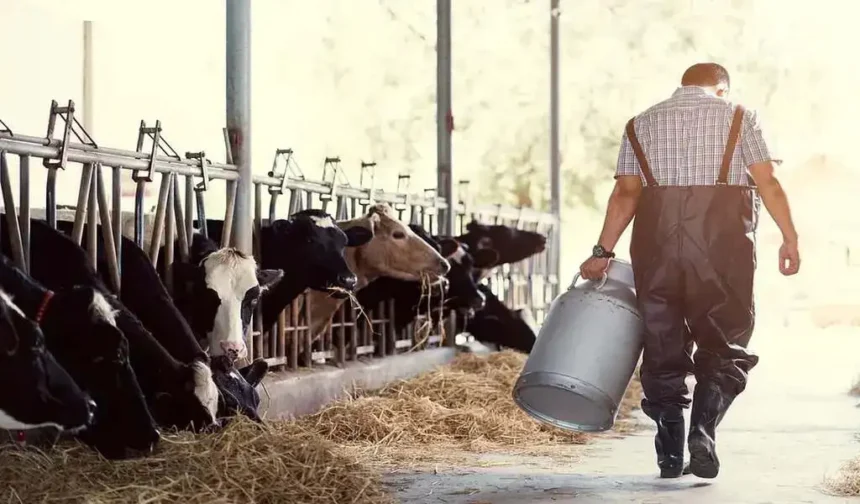(CTN News) – Recent research suggests that the Bird Flu virus, rapidly disseminating among dairy cattle, may also propagate via airborne transmission and wastewater on farms, in addition to being conveyed by milking apparatus.
The researchers behind the study arrived at this result.
Although no one appears to be ill, scholars contend that the finding may jeopardize the welfare of both workers and cattle.
In an interview with The New York Times, Seema Lakdawala, the principal author of this study and a virology expert at Emory University in Atlanta, remarked that “there is no singular method” for the transmission of this virus.
The preliminary investigation, not yet peer-reviewed, examined fourteen dairy farms in California. The latter half of 2024 and the early part of 2025 saw reports of avian influenza at these farms.
The samples gathered by investigators originated from several sources, including the air, milking equipment, wastewater, and the cows themselves. The analysis has revealed the presence of activated virus in the air of milking parlors and other enclosed areas where cows are milked.
Moreover, researchers discovered traces of the Bird Flu in the respiratory exhalations of infected cows, in contaminated water, and on milking apparatus. All of these were identified in conjunction with those previously listed.
Lakdawala elucidated that the milking process generates a substantial quantity of aerosols. Experts previously believed that human interaction or contaminated apparatus primarily transmitted the virus, often designated H5N1.
This study and others imply this may not always be true.
The research led by Lakdawala discovered cows that remained ill despite the lack of apparent symptoms, suggesting that the virus may be covertly disseminating throughout herds. This information indicates that the virus is disseminating clandestinely among livestock.
The United States Department of Agriculture (USDA) reports that the Bird Flu virus has disseminated to over one thousand flocks across seventeen states. California hosts a significant portion of these herds. It has also caused the disease in numerous individuals in the United States, leading to several hospitalizations and one death.
The Bird Flu appears to be more frequent in cow’s milk, especially from cows that were ill prior to consumption. The research findings indicated that the milk tends to thicken and acquire a yellow hue.
Milking machines can transmit the virus between cows because they are utilized on numerous cows in a brief timeframe. However, some research findings suggest that cows exposed to contaminated equipment alone did not necessarily contract a disease.
Current research findings suggest that the Bird Flu virus may also transmit through the air via minute droplets of milk. Certain farmworkers may have contracted infections due to milk splashing into their eyes or faces, as indicated by the researchers’ findings in the study.
The ingestion of tainted milk has caused severe illness in cats, leading to a considerable number of fatalities. A considerable number of workers in these milking rooms choose to forgo wearing masks due to elevated temperature and humidity levels.
Experts say that this is the current state of Bird Flu.
According to Lakdawala, interviewed by The Times, face shields can diminish the likelihood of illness when worn.
Furthermore, she stated that there will perpetually be an increase in the incidence of infections in humans. Lakdawala subsequently remarked, “This situation has the potential to create something that could be significantly dangerous in a few years.”
Currently, most infected Americans have not yet manifested symptoms deemed severe. This is likely associated with the substantial protection many individuals possess against previously encountered influenza viruses, particularly H1N1.
Conversely, Troy Sutton, an Bird Flu expert at Pennsylvania State University, asserts that adults with compromised immune systems and younger children may be more susceptible to catastrophic epidemic outbreaks.
Further surveillance may be necessary during the fall, as bird migration resumes and the probability of disease transmission escalates, according to the assessments of other physicians.
SOURCE: USN
SEE ALSO:
Legionnaires Disease Outbreak in New York Raises Concerns Over Water Safety
Health Concerns When Home Cleaning is Unreliable
The Mosquito-Borne Disease Chikungunya is Spreading Across Southern China.















